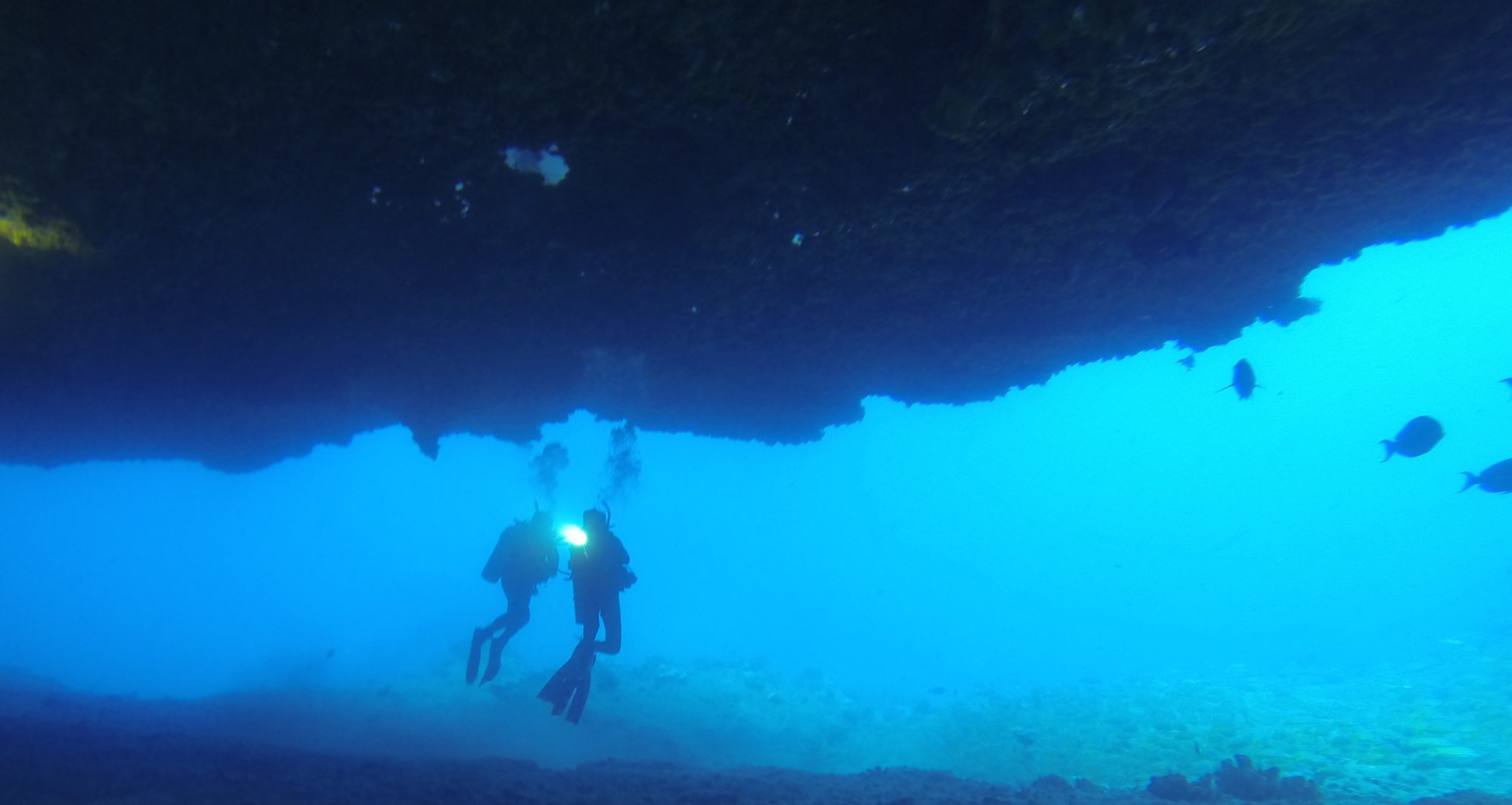For as long as I’ve been a diver, I’ve been particularly excited to get to see a nudibranch. The first part of the name ‘nudibranch’ does mean “naked” but that has nothing to do with why they’re exciting to see!
The word “nudibranch” comes from Latin; “Nudi” means ‘naked’ and “branch” is ‘gills’. So, we are talking about an animal that, in most cases, has gills external to its body. Obviously, this is not normal animal kingdom type stuff!
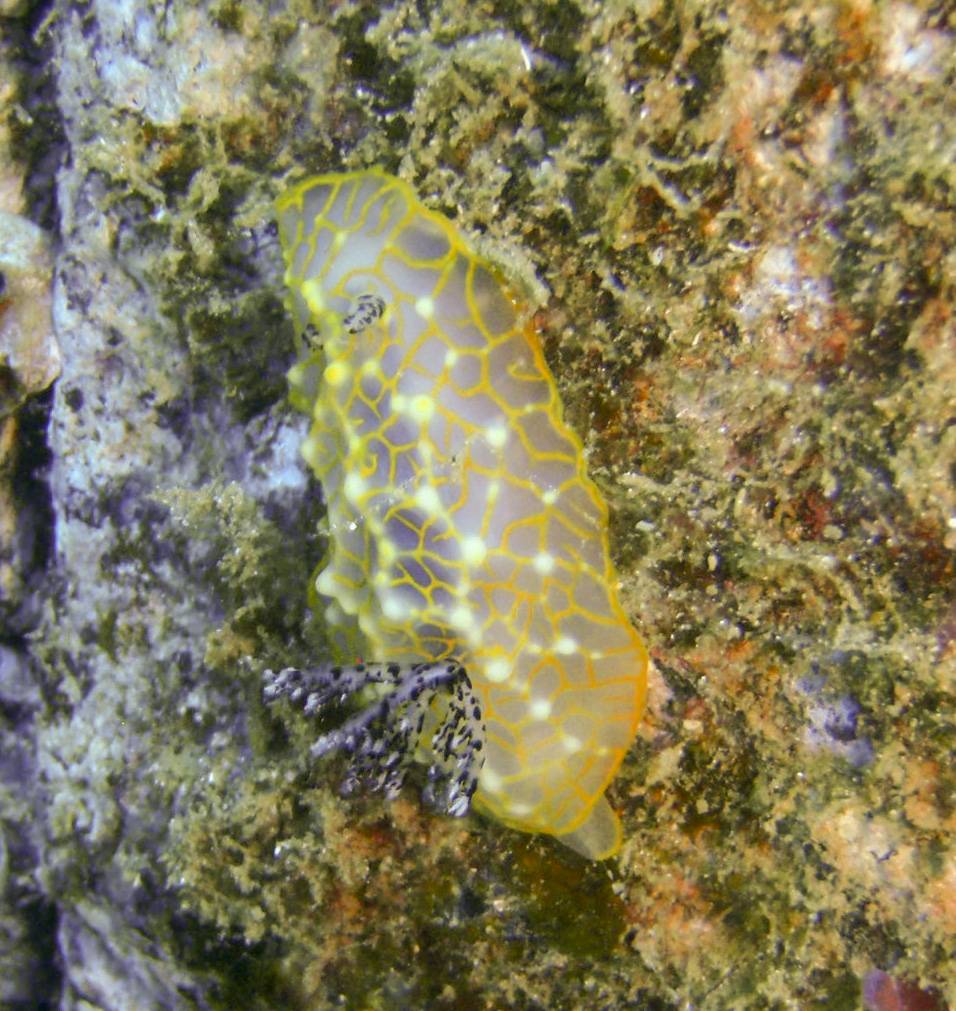
In the image of the Gold Lace nudibranch, notice the feathery looking stuff near the lower part of the body – those are gills. To put this in a totally inappropriate perspective, our president spends a lot of time talking out his tail while some nudibranchs spend their lives breathing through theirs. Does this mean they’d be good candidates for vice-president?
According to the World Registry of Marine Species there are currently at least 2,300 species of nudibranch that can be found throughout seas worldwide. While the greatest diversity can be seen on shallow tropical reefs, some have been discovered at depths exceeding 8,000 feet.
Now let’s get to the part about why I’m particularly excited when I get to see a nudibranch. As it says on Wikipedia “This group includes some of the most colorful creatures on earth.” As I say “These things are awesome!” It’s this colorful nature that makes them so fun to see. To put it simply, many are just plain spectacular.
If you’ve read some of my other posts then you might be starting to figure out that I’m pretty much a total nerd.
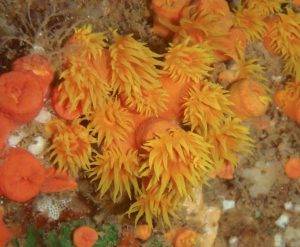
One sign of that fact is that I think it’s super cool how nudibranchs have a variety of ways to defend themselves. Since they are just slugs and couldn’t hope to outrun or outmaneuver larger predators, they’ve developed a variety of passive defenses instead. Some individuals have developed coloration patterns that mimic their primary food source. If the Cup Coral nudibranch was hanging
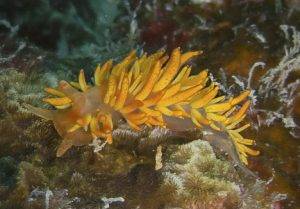
around inside the Orange Cup Coral would you see it?
Other nudibranchs go the exact opposite route and have such intensely bright and contrasting color patterns that you couldn’t possibly miss seeing them. In these cases the bright colors are believed to signal to predators that the creature is either poisonous or intensely distasteful.
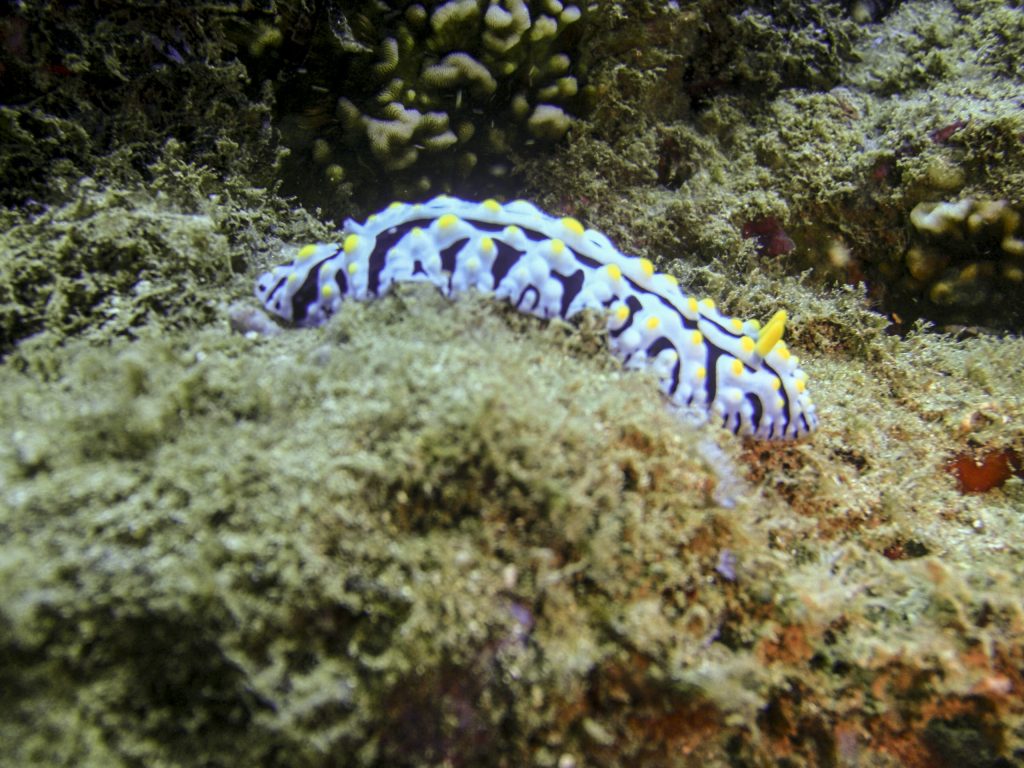
And then, there are some – like the Blue Dragon – that can take stinging cells (nematocysts) from the animals they eat.
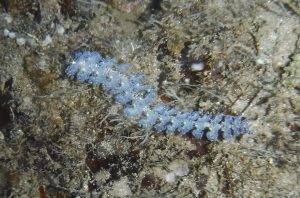
This type of nudibranch is capable of eating these nematocysts and relocating them, through their digestive organs, along their bodies where they will then provide a defensive system for the nudibranch.
All of this is in sharp contrast to a creature like me who has primarily relied on an obnoxious personality and sarcasm as a form of keeping potential threats at a distance. In actual practice, this plan frequently backfires and actually creates enemies that didn’t previously exist. Again, our president. . .
I could go on listing interesting nudibranch facts but I think I’ll just post a few more pictures of some of the one’s we see while scuba diving on Kauai instead.
